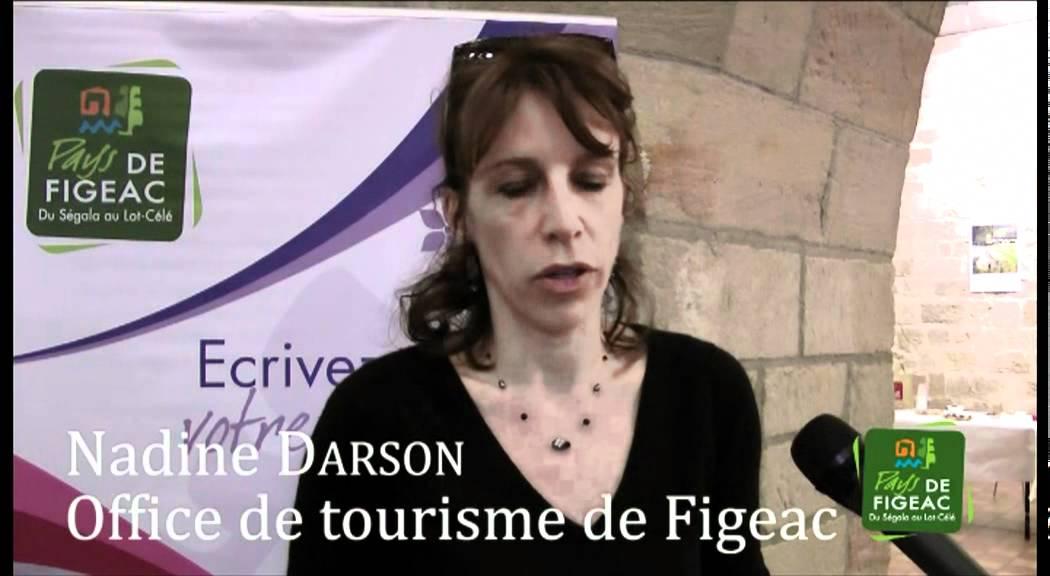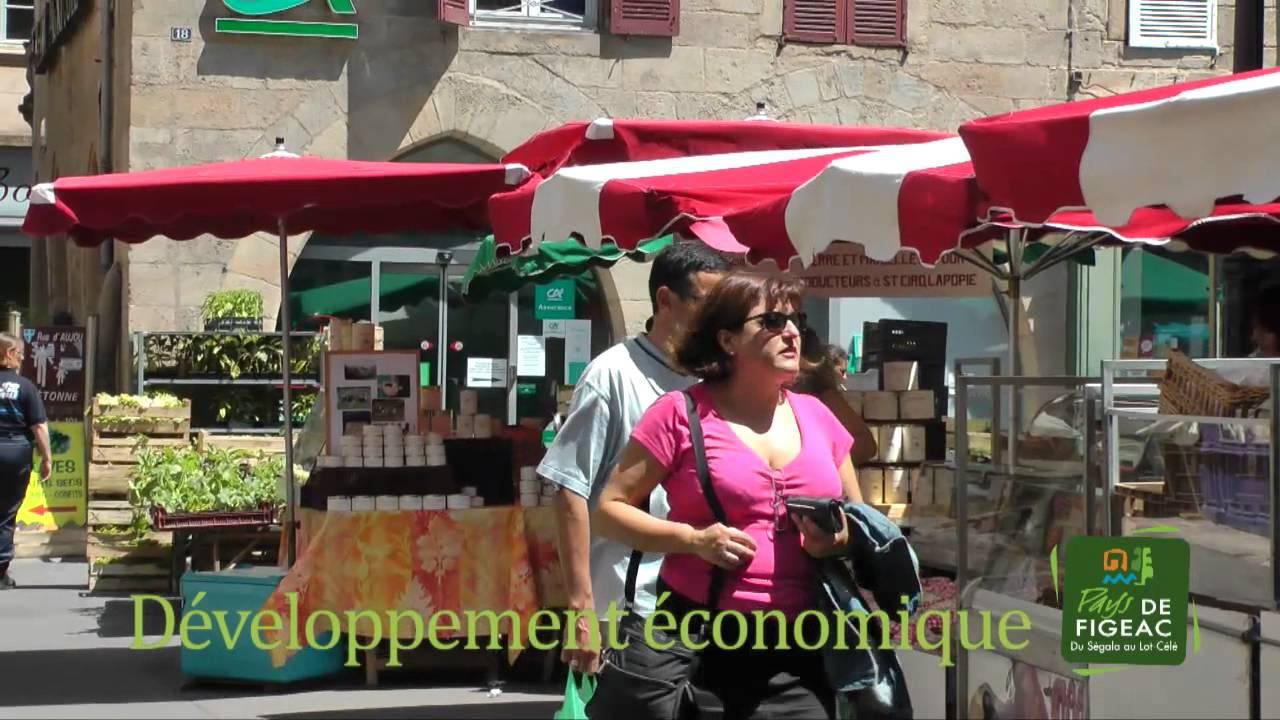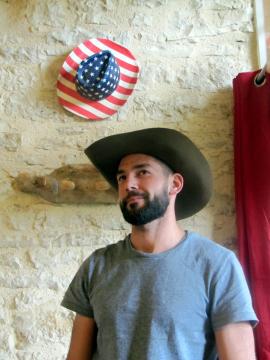Figeac is een Franse gemeente in de regio Occitanie. Het is met ongeveer 10.000 inwoners de op een na grootste gemeente in het departement Lot.
Figeac heeft zich in de Middeleeuwen, op het kruispunt van Auvergne, Rouergue en Quercy ontwikkeld tot een van de meest florerende middeleeuwse steden. Wat bijzonder is aan Figeac is dat een relatief groot deel van de oude bebouwing bewaard is gebleven, de stad heeft veel oude monumenten.
Figeac is gelegen aan de rivier de Célé, een zijrivier van de Lot.
Bezienswaardigheden
Figeac heeft veel oude bebouwing, al in de Belle Époque (de periode voor de Eerste Wereldoorlog) is een begin gemaakt met het behouden van het cultureel erfgoed, is het Hôtel de la Monnaie gerestaureerd. Nog steeds is het een van de hoogtepunten in Frankrijk van de middeleeuwse bouwkunst. Met name de zuidgevel toont nog de originele opzet met de arcades. In Figeac is de ontwikkeling van het bouwen van de 12e tot de 14e eeuw goed terug te vinden. The construction of the large houses (hôtels) of the wealthy merchants was on the ground floor the workshop/the warehouse, in the front the arcades with the display window. The living room was on the first floor is via a narrow spiral staircase. The attics were mostly dry attics, for drying fruit, dyed fabrics and the like. The decoration of the facades was to early 13th century romance, with bearded characters, mythical animals and stylised leaf motifs, as seen on the Maison du Griffon. The subsequent French Gothic is characterised by the larger Windows and the graceful leaf motifs. The fourteenth century is characterized by the luxurious stone palaces of the oligarchy of Figeac (b. v. Hôtel d'Auglanat). The construction of the large houses (hôtels) of the wealthy merchants was on the ground floor the workshop/the warehouse, in the front the arcades with the display window. The living room was on the first floor is via a narrow spiral staircase. The attics were mostly dry attics, for drying fruit, dyed fabrics and the like. The decoration of the facades was to early 13th century romance, with bearded characters, mythical animals and stylised leaf motifs, as seen on the Maison du Griffon. The subsequent French Gothic is characterised by the larger Windows and the graceful leaf motifs. The fourteenth century is characterized by the luxurious stone palaces of the oligarchy of Figeac (b. v. Hôtel d'Auglanat).In de Renaissance volgt een nieuwe generatie van huizen, de vensters worden nog groter, de toegangen van de huizen van de gegoede burgers worden monumentale trappen met fijnbewerkte deuren (bijvoorbeeld het Maison de Galiot de Genouillac).
Opvallend is op de Place des Écritures de enorme afbeelding van de steen van Rosetta, gemaakt in zwart graniet door de Amerikaanse kunstenaar Joseph Kosuth. Het is een monument voor het levenswerk van Jean-François Champollion, samen met de bijbehorende ruimtes met een vertaling in het Frans van de tekst op de steen en een tuin met onder meer papyrus, verwijzend naar het oudste papier waarop geschreven werd.
In Figeac bevindt zich het Champollion Museum, dat gewijd is aan de Egyptische kunst.
De Chemin du Puy, de 18 km lange pelgrimsroute tussen Figeac en Montredon, is opgenomen op de Werelderfgoedlijst van de UNESCO. Figeac is a French commune in the region of Occitanie. It is with approximately 10,000 inhabitants the second largest commune in the Lot department in South-Western France. Figeac has developed in the middle ages, at the crossroads of Auvergne, Rouergue and Quercy developed into one of the most flourishing medieval cities. What special about Figeac is that a relatively large part of the old buildings has been preserved, the city has a lot of ancient monuments. Figeac is located on the river Célé River, a tributary of the Lot. Sights Figeac has many old buildings, all in the Belle Époque (the period before the first world war) a start was made on the preservation of the cultural heritage, the Hôtel de la Monnaie restored. Still, it is one of the highlights of the medieval architecture in France. In particular the south facade still shows the original intent with the arcades. In Figeac is the development of building from the 12th to the 14th century. The construction of the large houses (hôtels) of the wealthy merchants was on the ground floor the workshop/the warehouse, in the front the arcades with the display window. The living room was on the first floor is via a narrow spiral staircase. The attics were mostly dry attics, for drying fruit, dyed fabrics and the like. The decoration of the facades was to early 13th century romance, with bearded characters, mythical animals and stylised leaf motifs, as seen on the Maison du Griffon. The subsequent French Gothic is characterised by the larger Windows and the graceful leaf motifs. The fourteenth century is characterized by the luxurious stone palaces of the oligarchy of Figeac (b. v. Hôtel d'Auglanat).
Figeac heeft zich in de Middeleeuwen, op het kruispunt van Auvergne, Rouergue en Quercy ontwikkeld tot een van de meest florerende middeleeuwse steden. Wat bijzonder is aan Figeac is dat een relatief groot deel van de oude bebouwing bewaard is gebleven, de stad heeft veel oude monumenten.
Figeac is gelegen aan de rivier de Célé, een zijrivier van de Lot.
Bezienswaardigheden
Figeac heeft veel oude bebouwing, al in de Belle Époque (de periode voor de Eerste Wereldoorlog) is een begin gemaakt met het behouden van het cultureel erfgoed, is het Hôtel de la Monnaie gerestaureerd. Nog steeds is het een van de hoogtepunten in Frankrijk van de middeleeuwse bouwkunst. Met name de zuidgevel toont nog de originele opzet met de arcades. In Figeac is de ontwikkeling van het bouwen van de 12e tot de 14e eeuw goed terug te vinden. The construction of the large houses (hôtels) of the wealthy merchants was on the ground floor the workshop/the warehouse, in the front the arcades with the display window. The living room was on the first floor is via a narrow spiral staircase. The attics were mostly dry attics, for drying fruit, dyed fabrics and the like. The decoration of the facades was to early 13th century romance, with bearded characters, mythical animals and stylised leaf motifs, as seen on the Maison du Griffon. The subsequent French Gothic is characterised by the larger Windows and the graceful leaf motifs. The fourteenth century is characterized by the luxurious stone palaces of the oligarchy of Figeac (b. v. Hôtel d'Auglanat). The construction of the large houses (hôtels) of the wealthy merchants was on the ground floor the workshop/the warehouse, in the front the arcades with the display window. The living room was on the first floor is via a narrow spiral staircase. The attics were mostly dry attics, for drying fruit, dyed fabrics and the like. The decoration of the facades was to early 13th century romance, with bearded characters, mythical animals and stylised leaf motifs, as seen on the Maison du Griffon. The subsequent French Gothic is characterised by the larger Windows and the graceful leaf motifs. The fourteenth century is characterized by the luxurious stone palaces of the oligarchy of Figeac (b. v. Hôtel d'Auglanat).In de Renaissance volgt een nieuwe generatie van huizen, de vensters worden nog groter, de toegangen van de huizen van de gegoede burgers worden monumentale trappen met fijnbewerkte deuren (bijvoorbeeld het Maison de Galiot de Genouillac).
Opvallend is op de Place des Écritures de enorme afbeelding van de steen van Rosetta, gemaakt in zwart graniet door de Amerikaanse kunstenaar Joseph Kosuth. Het is een monument voor het levenswerk van Jean-François Champollion, samen met de bijbehorende ruimtes met een vertaling in het Frans van de tekst op de steen en een tuin met onder meer papyrus, verwijzend naar het oudste papier waarop geschreven werd.
In Figeac bevindt zich het Champollion Museum, dat gewijd is aan de Egyptische kunst.
De Chemin du Puy, de 18 km lange pelgrimsroute tussen Figeac en Montredon, is opgenomen op de Werelderfgoedlijst van de UNESCO. Figeac is a French commune in the region of Occitanie. It is with approximately 10,000 inhabitants the second largest commune in the Lot department in South-Western France. Figeac has developed in the middle ages, at the crossroads of Auvergne, Rouergue and Quercy developed into one of the most flourishing medieval cities. What special about Figeac is that a relatively large part of the old buildings has been preserved, the city has a lot of ancient monuments. Figeac is located on the river Célé River, a tributary of the Lot. Sights Figeac has many old buildings, all in the Belle Époque (the period before the first world war) a start was made on the preservation of the cultural heritage, the Hôtel de la Monnaie restored. Still, it is one of the highlights of the medieval architecture in France. In particular the south facade still shows the original intent with the arcades. In Figeac is the development of building from the 12th to the 14th century. The construction of the large houses (hôtels) of the wealthy merchants was on the ground floor the workshop/the warehouse, in the front the arcades with the display window. The living room was on the first floor is via a narrow spiral staircase. The attics were mostly dry attics, for drying fruit, dyed fabrics and the like. The decoration of the facades was to early 13th century romance, with bearded characters, mythical animals and stylised leaf motifs, as seen on the Maison du Griffon. The subsequent French Gothic is characterised by the larger Windows and the graceful leaf motifs. The fourteenth century is characterized by the luxurious stone palaces of the oligarchy of Figeac (b. v. Hôtel d'Auglanat).
Soyez le premier à commenter cette vidéo.










